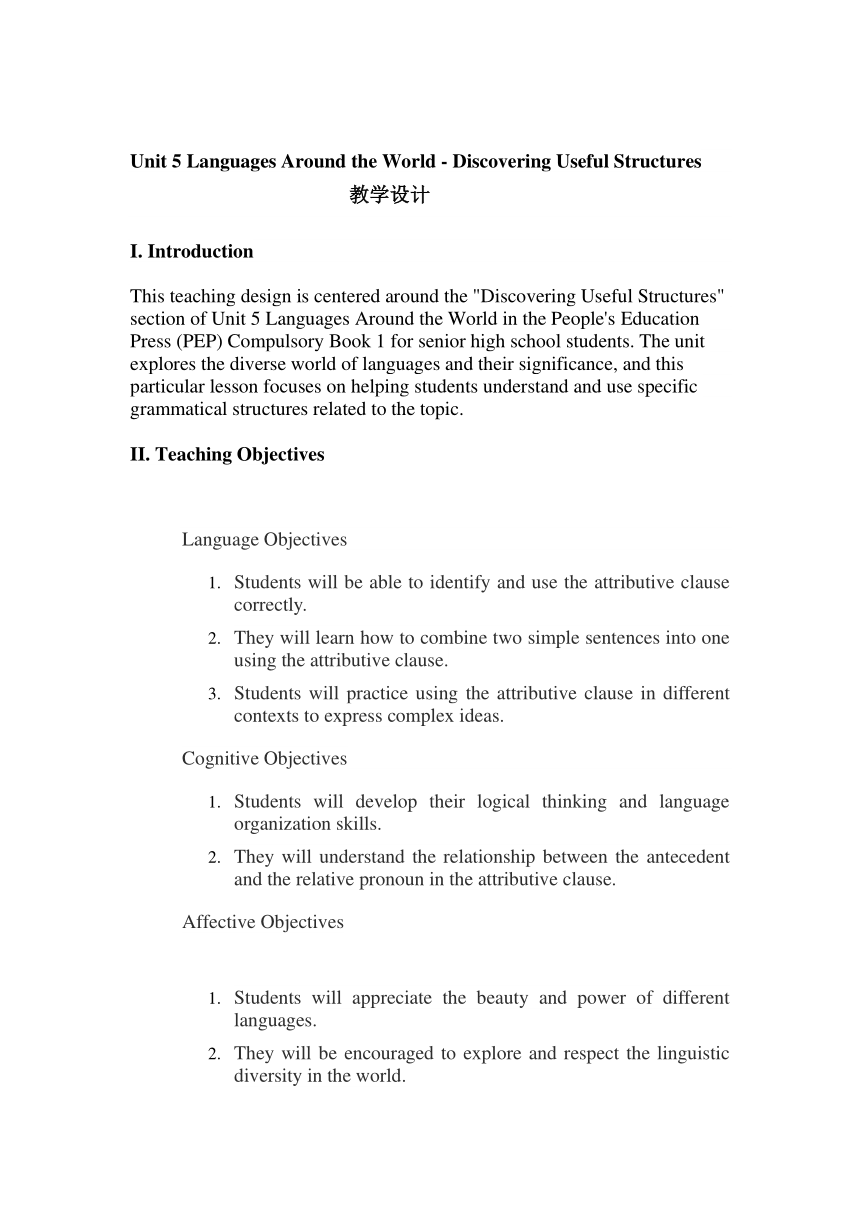
Unit 5 Languages Around the World - Discovering Useful Structures 教学设计 I. Introduction This teaching design is centered around the "Discovering Useful Structures" section of Unit 5 Languages Around the World in the People's Education Press (PEP) Compulsory Book 1 for senior high school students. The unit explores the diverse world of languages and their significance, and this particular lesson focuses on helping students understand and use specific grammatical structures related to the topic. II. Teaching Objectives Language Objectives Students will be able to identify and use the attributive clause correctly. They will learn how to combine two simple sentences into one using the attributive clause. Students will practice using the attributive clause in different contexts to express complex ideas. Cognitive Objectives Students will develop their logical thinking and language organization skills. They will understand the relationship between the antecedent and the relative pronoun in the attributive clause. Affective Objectives Students will appreciate the beauty and power of different languages. They will be encouraged to explore and respect the linguistic diversity in the world. III. Teaching Materials Textbooks: People's Education Press (2019) Compulsory Book 1. Supplementary materials such as examples, exercises, and multimedia resources related to the attributive clause. IV. Teaching Methods Explicit teaching: Clearly explain the rules and usage of the attributive clause. Guided practice: Provide step-by-step guidance for students to practice using the attributive clause. Cooperative learning: Organize group activities to promote interaction and peer learning. Contextual learning: Use real-life examples and texts to make the learning more meaningful. V. Teaching Procedure Warm-up (10 minutes) Show some pictures or videos related to different languages and ask students to share their thoughts and experiences about them. Lead into the topic of the attributive clause by asking questions like "What kind of language do you like The language that I like is English." Presentation (30 minutes) Introduce the concept of the attributive clause and its basic structure (antecedent + relative pronoun + clause). Use simple examples to illustrate how the attributive clause works, e.g. "The book which I bought yesterday is very interesting." Explain the different types of relative pronouns and their functions. Highlight the importance of the attributive clause in expressing specific meanings and adding details. Practice (40 minutes) Provide a series of exercises for students to identify the attributive clauses in given sentences. Have students complete fill-in-the-blank exercises to practice using the correct relative pronouns. Guide students to combine two simple sentences into one using the attributive clause. For example: "I have a book. The book is about history." -> "I have a book which is about history." Encourage students to create their own senten ... ...
~~ 您好,已阅读到文档的结尾了 ~~

